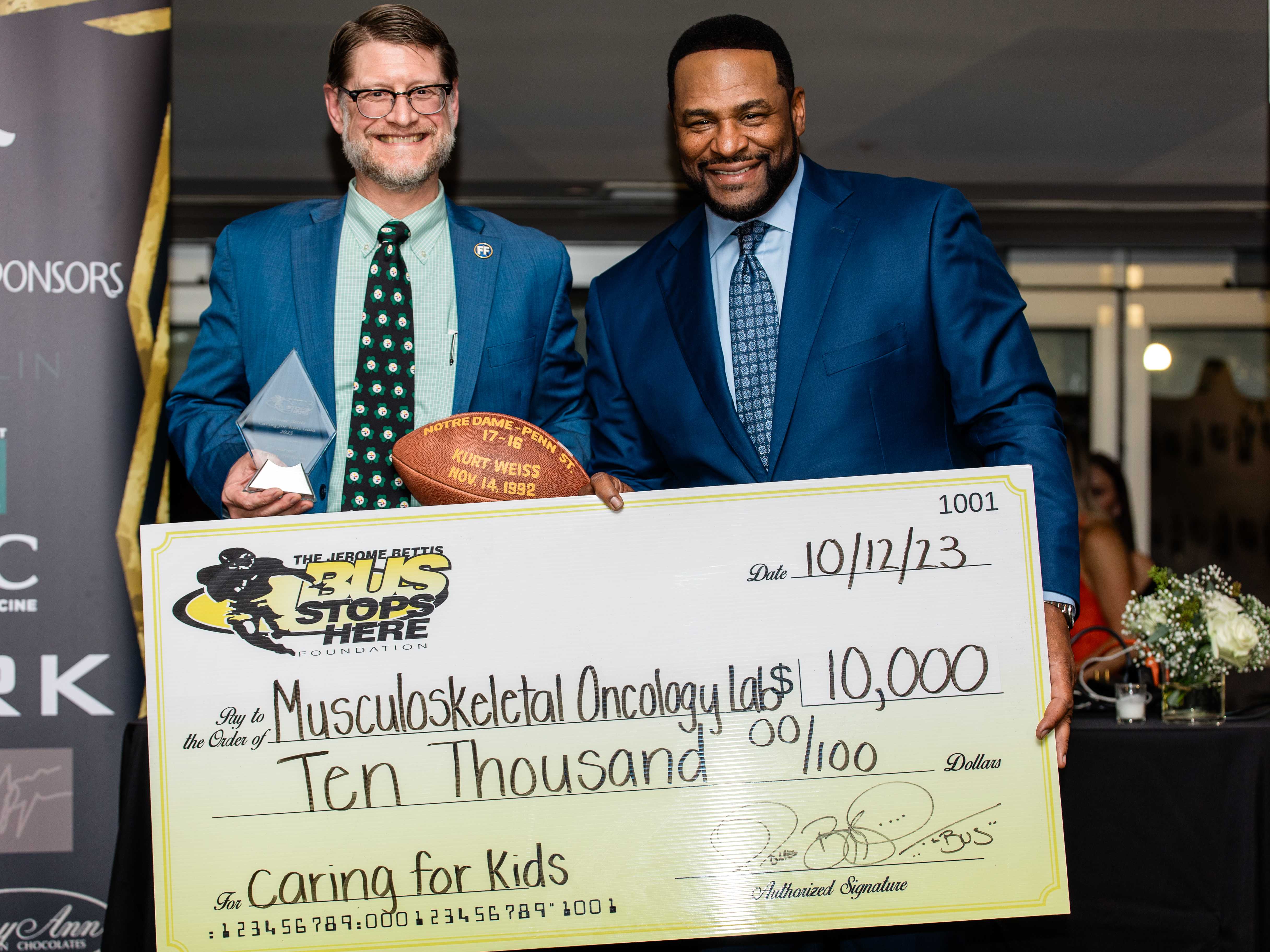Every nonprofit leader knows the final stretch of the year can make or break annual fundraising goals. Between the holiday spirit of giving and the financial incentives of year-end donations, October through December often determines whether an organization ends the year strong or starts the next one playing catch-up.
More than a third of charitable giving occurs in these final months. With so many organizations competing for attention, standing out takes more than heartfelt messaging. It requires data-driven strategy, compelling storytelling, and a flawless donor experience.
At Valiant 3 Communications, we’ve helped countless nonprofits and foundations strengthen their impact through creative and strategic campaigns. Below, we’re breaking down the core steps to help your organization supercharge end-of-year fundraising and finish 2025 stronger than ever.
1. Start With the Foundation: Clean Your Database
Before launching a single campaign or appeal, take a close look at your data. Your donor database is the foundation of every fundraising effort. If it’s filled with outdated addresses, duplicates, or missing information, even the best campaign will struggle to reach the right audience.
Why Clean Data Matters
When your data is clean, your campaigns become more powerful. You can:
- Segment effectively. Tailor messaging to major donors, monthly givers, or first-time supporters.
- Personalize authentically. Correct names, updated addresses, and custom messaging make donors feel seen and valued.
- Save time and money. A small 5% duplication rate in a large database can waste thousands annually in postage, printing and email costs.
- Strengthen relationships. Clean data allows you to communicate with accuracy and intention, key ingredients for donor loyalty.
Ultimately, accurate data shows respect for your supporters. Every personalized touchpoint reinforces that they matter and that their contributions are making a difference.
How to Keep Your Data Clean
- Run regular audits to verify addresses, emails, and giving history.
- Merge duplicate records carefully to preserve complete donor histories.
- Standardize how data is entered (capitalization, phone formats, etc.).
- Remove or reclassify inactive contacts.
- Make sure all your tools—CRM, donation platform, and email software—sync seamlessly.
A clean database ensures your fundraising campaigns reach the right people with the right message at the right time.
2. Reflect Before You Relaunch: Review Past Campaign Performance
Before diving into your next campaign, reflect on what’s worked and what hasn’t. Year-end fundraising is fueled by lessons from the past.
Look closely at:
- Revenue and ROI. Which campaigns had the best return on investment?
- Engagement. Which messages, visuals, or channels drove the most donor response?
- Follow-through. Did new donors stay engaged, or was retention low?
- Timing. When did donations spike and when did they stall?
Analyzing these trends provides clarity on where to focus your efforts.
Rethink Your Donation Experience
A smooth donation process can be the difference between a one-time visitor and a lifelong supporter. Review your donation page to ensure it clearly communicates your mission and makes giving easy.
As you craft new appeals, restate your “why.” Donors need to understand the impact of their gift. Instead of generic calls like “Support our programs,” try this:
“Your donation provides supplies and robotics kits for children in our Jerome Bettis’ CyberBus after-school program.”
Specific, outcome-driven language inspires trust and urgency.
3. Tap Into the Power of Gift Matching
Few fundraising tools create more excitement than a gift-matching campaign. When donors know their contribution will be doubled, participation rates surge.
Matching campaigns turn the generosity of one major donor or a corporate partner into a multiplier for your entire community.
How to Structure a Matching Campaign
Options include:
- 1:1 Match: Each dollar donated is matched by another.
- 2:1 Match: An even more motivating option that doubles the perceived impact.
- Capped Match: “Every dollar up to $50,000 will be matched.” This creates both urgency and a clear goal.
Whether you’re a small nonprofit or national foundation, matching campaigns motivate donors to act during a defined period when their gifts matter most.
Corporate Partners Make Powerful Match Sponsors
Year-end is an ideal time to approach corporate partners for match funding. Many companies want to give back and align with causes their employees care about.
Offer them a custom opportunity, such as matching employee donations or sponsoring a Giving Tuesday challenge. These partnerships amplify visibility for both the charity and the company while generating real impact.
A strong match campaign creates a sense of shared purpose and turns individual gifts into collective momentum.
4. Launch Strategically: Make Your Moment Count
By mid-November, most charities are gearing up for their final push. A thoughtful launch plan helps ensure your message breaks through the noise.
Pre-Launch Awareness
In early November, begin teasing your campaign. Use storytelling and visuals to build anticipation. A simple “something big is coming” email or video from your founder can spark curiosity.
If you’re participating in Giving Tuesday (December 2, 2025), build hype the week before with personal stories, testimonials, and clear explanations of how each dollar makes an impact.
Official Launch
When you’re ready to go live, increase your communication cadence. Send multiple emails across different segments and lean into social media storytelling.
Show the human side of your work. Post behind-the-scenes clips, short interviews, or day-in-the-life videos. Let donors see the faces and hear the voices of those directly impacted by your mission.
Strong visuals and storytelling drive emotion, and emotion drives giving.
5. Optimize and Accelerate (Mid–Late December)
As the holidays approach, generosity peaks. This is the time to ramp up your presence, reinforce urgency, and make it easy to give.
Keep Momentum High
- Send progress updates like “We’re 80% to our goal, help us cross the finish line!”
- Share impact stories daily across social platforms.
- Include countdowns in emails and posts (“3 days left to double your impact”).
- Spotlight any remaining gift matches.
If you’ve set a specific financial goal, share real-time updates. Transparency fuels excitement and trust.
Every reminder should emphasize how gifts directly change lives and how time is running out to make that impact before year-end.
6. Follow Up and Strengthen Relationships
When January arrives, your focus shifts from asking to appreciating. Gratitude is one of the most powerful tools for donor retention.
Say Thank You Thoughtfully
Send a personalized thank-you email within 48 hours of a donation. Then, follow up with an impact update that shows how their contribution made a difference.
Even better, pair your message with visuals, such as photos, short videos, or infographics highlighting results.
Turn Donors Into Advocates
Once supporters feel appreciated, invite them to stay involved:
- Introduce your monthly giving program.
- Encourage them to share your mission on social media.
- Offer volunteer opportunities or behind-the-scenes updates.
This phase is about transforming transactional giving into long-term connection. Donors who feel valued are far more likely to give again and to bring friends and colleagues with them.
7. Tell Stories That Inspire Action
People don’t give to organizations; they give to stories that move them.
Your story should communicate three key things:
- The problem you’re solving.
- The solution your organization provides.
- The impact the donor creates by joining in.
Example:
“Every winter, hundreds of inner-city youth wait at the bus stops without proper attire. With your support, we’ll deliver 400 hats, gloves, coats, etc. this winter to ensure no child goes without.”
Simple. Emotional. Actionable.
Keep It Consistent Across Channels
Your messaging should feel cohesive across all touchpoints, including social, email, print, video, and website.
- Use the same visuals and tagline everywhere.
- Keep your tone and mission clear.
- Sync your communications calendar to avoid overlap or confusion.
When every platform reinforces the same message, your organization’s voice feels stronger and more trustworthy.
8. Make Giving Effortless
A frictionless donation experience can dramatically increase conversion rates.
Simplify the Process
- Limit the number of required fields.
- Offer recurring donation options.
- Ensure mobile optimization, as more than half of online donations happen via phone.
- Include a clear thank-you message and shareable link after checkout.
Add Social Proof
Show donors they’re part of a movement:
“Join 1,200 others helping kids in our community access digital literacy programs.”
Peer validation builds trust and reinforces community impact.
Test and Adjust
Run quick A/B tests to see what resonates, such as different subject lines, imagery, or call-to-action buttons. The smallest tweaks can yield meaningful results.
9. Harness the Power of Video
Video content can elevate your message faster than any other medium. It’s emotional, personal, and easily shareable.
Create short clips under a minute that highlight impact stories, showcase volunteers, or feature a message from your founder. Reels and short-form videos perform exceptionally well on social media and help bring your mission to life.
You don’t need a full production crew; authenticity outperforms polish. Film vertically, use natural light, add captions, and always end with a clear donation link or QR code.
10. Keep the Momentum Going
The best end-of-year campaigns don’t end, they evolve.
In January, reflect on the campaign’s success and note what worked best. Then, share results publicly:
“Thanks to your generosity, we raised $250,000 and expanded our programs to serve 500 more families.”
This transparency builds credibility and sets the tone for future appeals.
Finally, let donors know what’s next. Frame your 2026 goals as a continuation of their impact:
“Because of you, we’re launching a new initiative to bring STEM education to even more kids.”
It keeps the relationship alive and reminds them that they’re an essential part of your ongoing story.
Final Thoughts
Year-end fundraising isn’t just about meeting financial goals; it’s about connecting people to purpose. By cleaning your data, reviewing past results, building compelling campaigns, and showing genuine gratitude, your organization can rise above the noise and drive lasting impact.
Every touchpoint, every email, video, or thank-you note, shapes how donors perceive your mission. Keep it human, keep it clear, and always circle back to the “why.”
When people understand why your mission matters, giving becomes more than a transaction; it becomes a movement.

